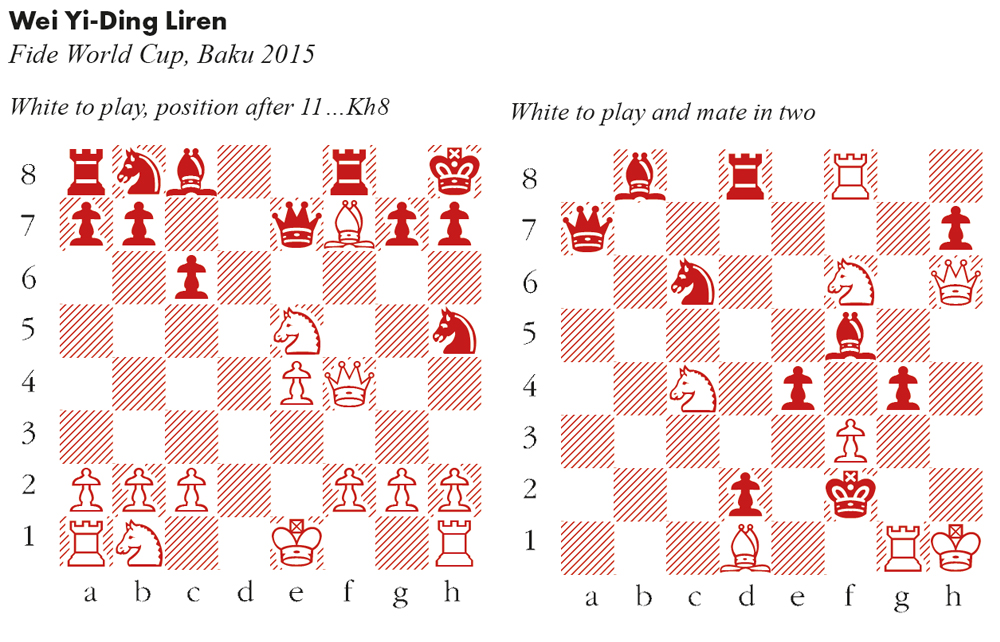There is a sublime satisfaction in a good detective thriller. We will, of course, have accessed the same facts as our sharp-witted sleuth. The fleck of yellow paint on the raincoat meant little to us, as did the creaking door and the page missing from the notebook. But at last the alibi is dismantled, and from the tangle of contradictions emerges an elegant, coherent thread. Genius, they say, is seeing what everyone else sees and thinking what no one else has thought.
On the chessboard, we also agree on many of the facts: this rook enjoys an open file, that bishop is pinning the knight. And much tactical reasoning is straightforward: ‘The queen is guarding against the mate, so let’s try to deflect it.’ But once in a while, one thrills to see a move which reveals links between pieces that had barely entered the imagination.
The position shown in the first diagram was brought to my attention by the splendidly forthright book Move First, Think Later, written by Willy Hendriks (New In Chess, 2012). It later appeared in a game between two of China’s top players, and another game of the author. The opening moves are as follows.
Wei Yi-Ding Liren
Fide World Cup, Baku 2015
1 e4 e5 2 Bc4 Nf6 3 d3 c6 4 Nf3 d5 5 Bb3 Bb4+ 6 Bd2 Bxd2+ 7 Qxd2 dxe4 8 Nxe5 O-O 9 dxe4 Qe7 10 Qf4 Nh5 11 Bxf7+ Kh8 (see above left diagram) White’s queen is attacked and his bishop is pinned, and the safe retreat squares (e.g. e3) appear to leave the Ne5 undefended. But things are not what they seem. 12 Qg3! A masterstroke. Now if 12…Nxg3 13 Ng6+ hxg6 14 hxg3+ with mate to follow. Who could have imagined that the lineup of the Rh1 and Kh8 could possibly be significant? Rxf7 13 Nxf7+ Qxf7 14 Qd6 Be6 15 Nc3 Nd7 16 O-O-O Here, the rook and two pawns slightly outweigh the knight and bishop.







Comments
Join the debate for just £1 a month
Be part of the conversation with other Spectator readers by getting your first three months for £3.
UNLOCK ACCESS Just £1 a monthAlready a subscriber? Log in